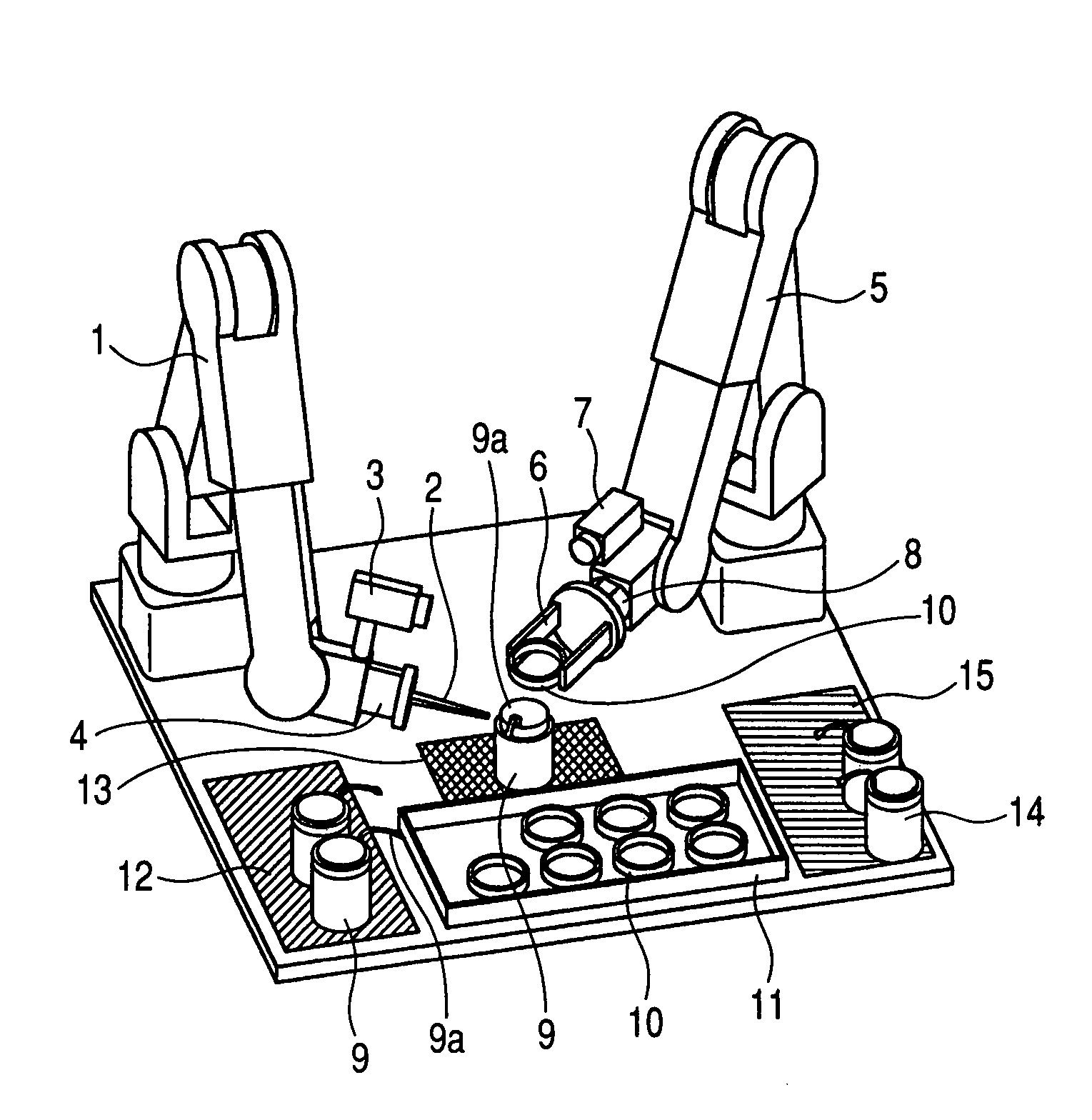Dual arm robot
a robot and arm technology, applied in the field of dual arm robots, can solve the problems of difficult co-operation between the two arms, difficult to track the posture change of a flexible object, and difficult to perform complicated work, so as to achieve the effect of reducing time and cost, and high assembly precision
- Summary
- Abstract
- Description
- Claims
- Application Information
AI Technical Summary
Benefits of technology
Problems solved by technology
Method used
Image
Examples
Embodiment Construction
[0023]As illustrated in FIG. 1A, this embodiment is a dual arm robot which performs assembly work of a lens barrel of a camera. A first arm 1 includes a first hand 2 and a first visual sensor 3 fixed to a wrist section of the first arm 1, the wrist section having a first force sensor 4 mounted thereon (incorporated therein). A second arm 5 includes a second hand 6 and a second visual sensor 7, and a wrist section of the second arm 5 has a second force sensor 8 mounted thereon (incorporated therein). The two arms 1 and 5 each include a control unit for controlling a movement of the arm, and are mutually in communication with a controller (now shown).
[0024]Output value data (output) of each visual sensor for detecting a position (position coordinate) of each hand and each force sensor are all commonly used by the controller (control unit). By performing coordinate conversion and calculation of a trajectory for assembly work based on the data, cooperative control required for assembly ...
PUM
 Login to View More
Login to View More Abstract
Description
Claims
Application Information
 Login to View More
Login to View More - R&D
- Intellectual Property
- Life Sciences
- Materials
- Tech Scout
- Unparalleled Data Quality
- Higher Quality Content
- 60% Fewer Hallucinations
Browse by: Latest US Patents, China's latest patents, Technical Efficacy Thesaurus, Application Domain, Technology Topic, Popular Technical Reports.
© 2025 PatSnap. All rights reserved.Legal|Privacy policy|Modern Slavery Act Transparency Statement|Sitemap|About US| Contact US: help@patsnap.com



